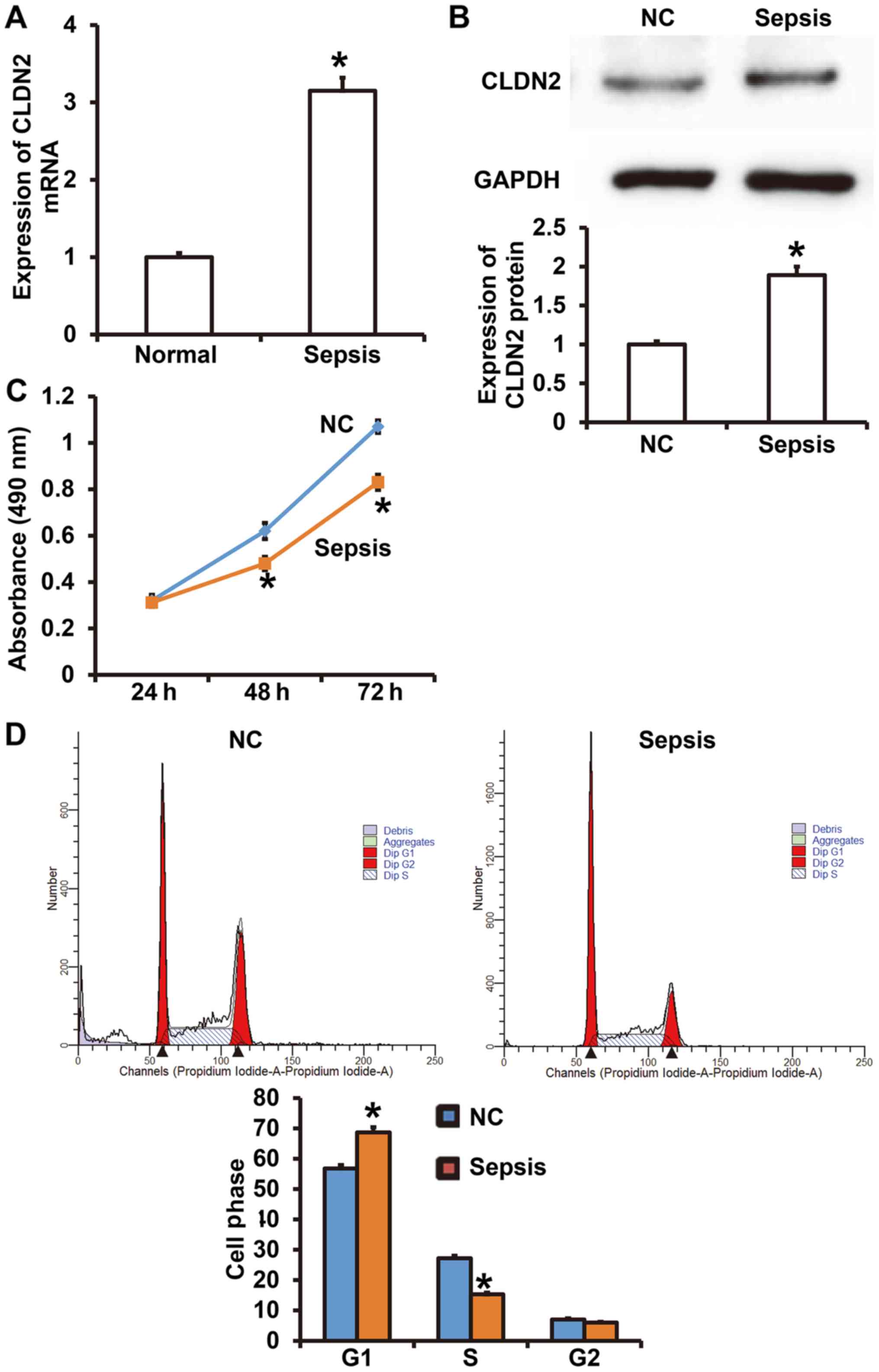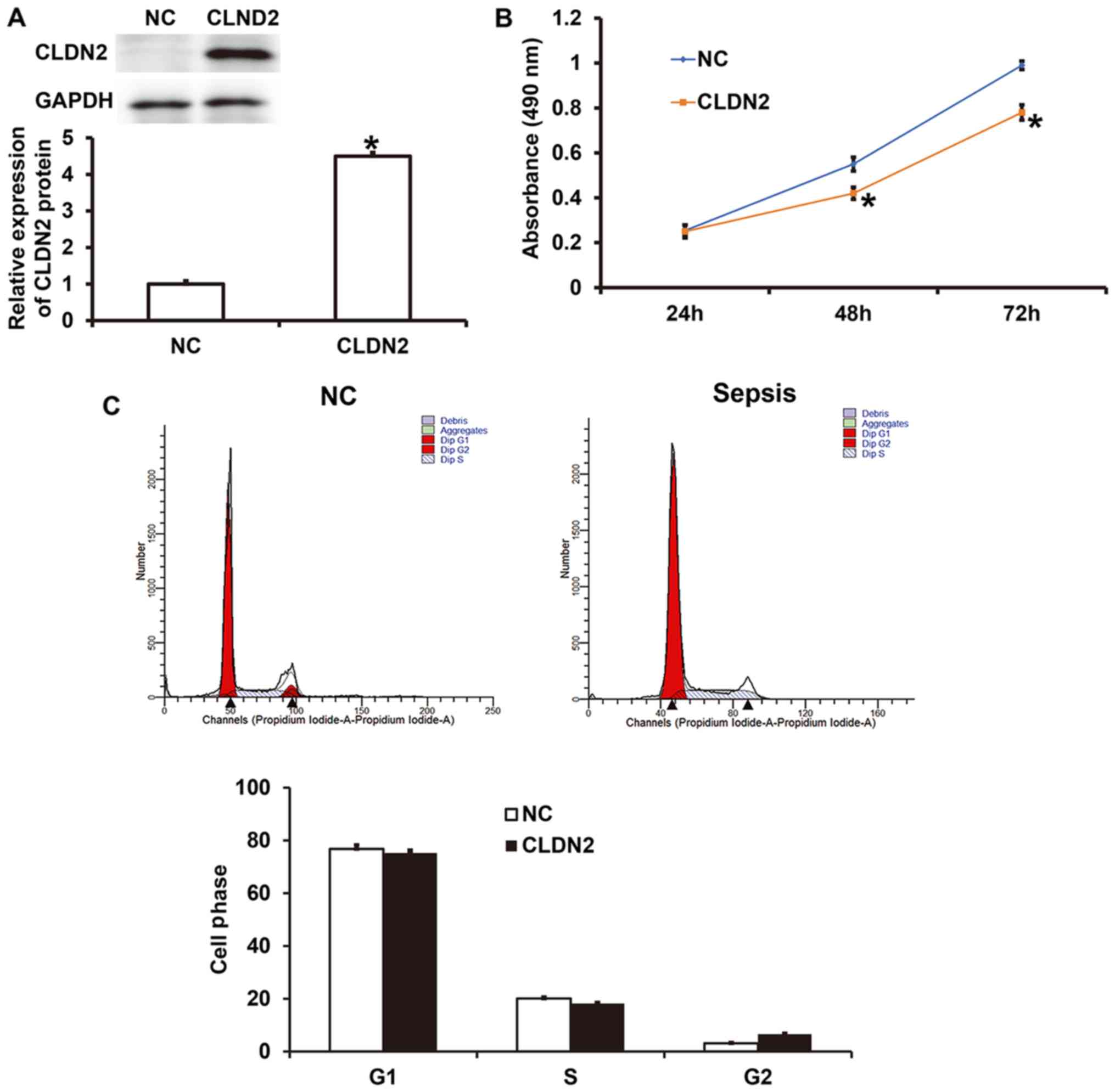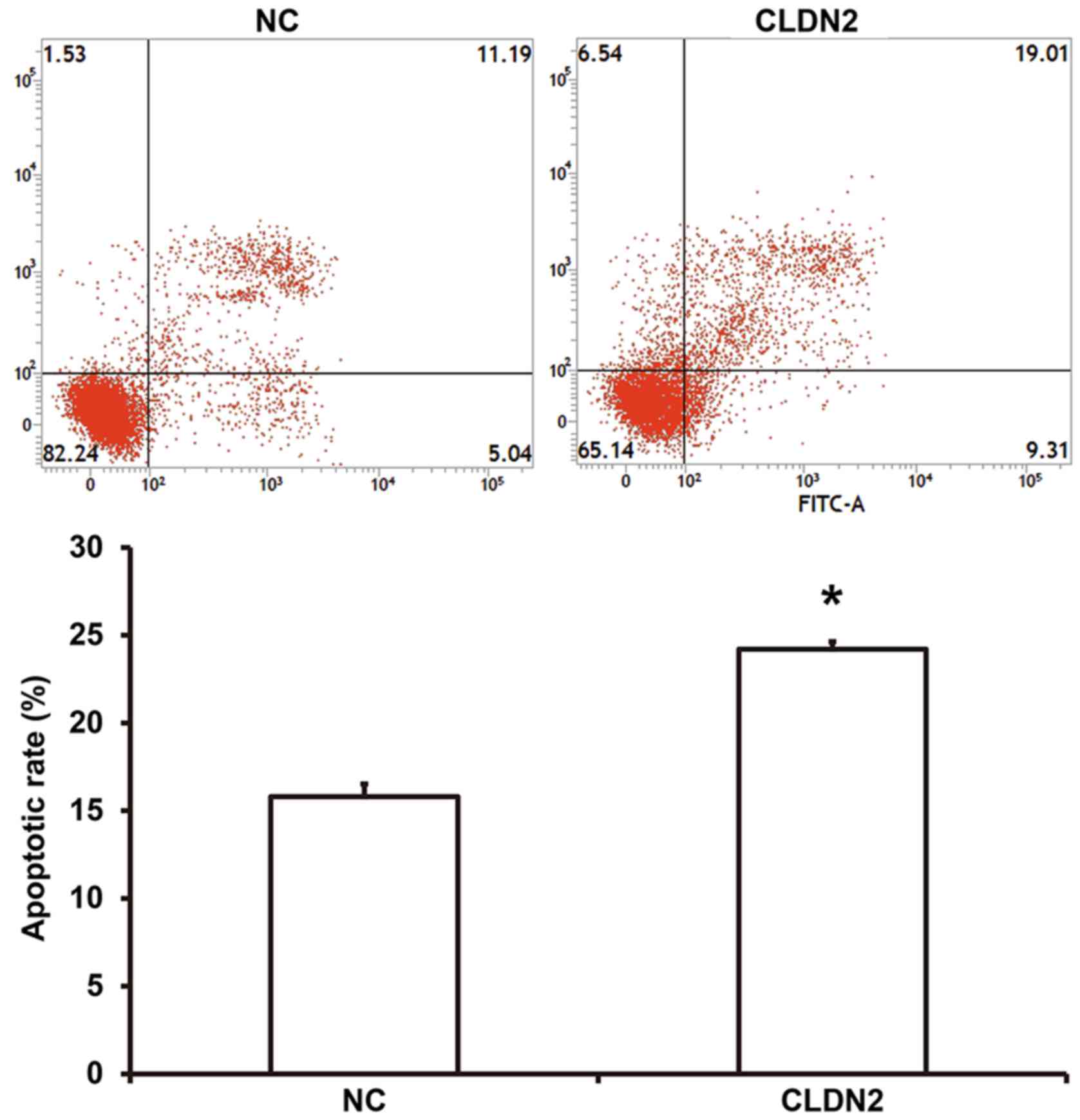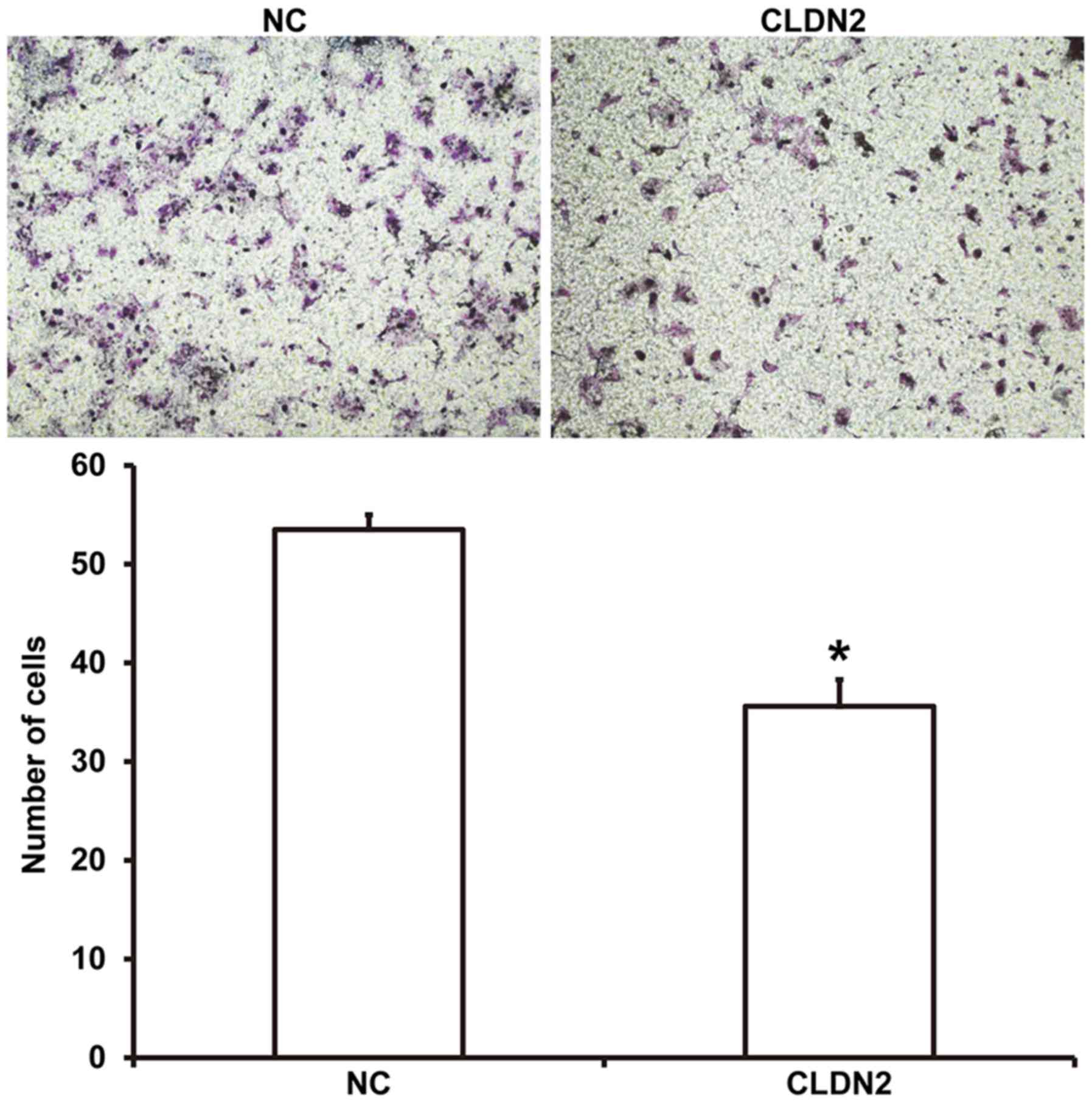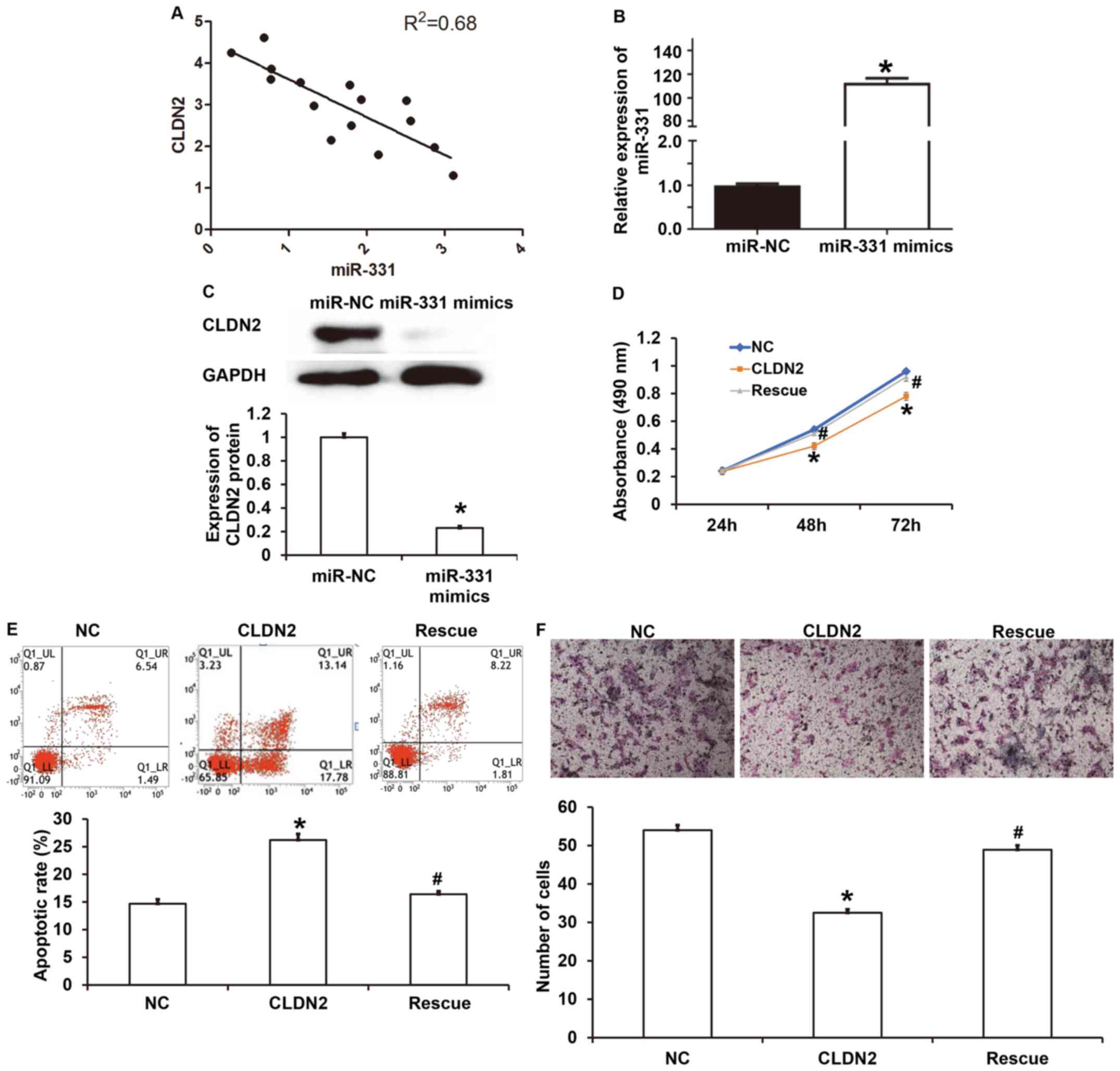|
1
|
Rhee C and Klompas M: Sepsis trends:
Increasing incidence and decreasing mortality, or changing
denominator? J Thorac Dis. 12 (Suppl 1):S89–S100. 2020.PubMed/NCBI View Article : Google Scholar
|
|
2
|
Kuchler L, Sha LK, Giegerich AK, Knape T,
Angioni C, Ferreirós N, Schmidt MV, Weigert A, Brüne B and von
Knethen A: Elevated intrathymic sphingosine-1-phosphate promotes
thymus involution during sepsis. Mol Immunol. 90:255–263.
2017.PubMed/NCBI View Article : Google Scholar
|
|
3
|
Chao CH, Chen HR, Chuang YC and Yeh TM:
Macrophage migration inhibitory factor-induced autophagy
contributes to thrombin-triggered endothelial hyperpermeability in
sepsis. Shock. 50:103–111. 2018.PubMed/NCBI View Article : Google Scholar
|
|
4
|
Bobelytė O, Gailiūtė I, Zubka V and
Žilinskaitė V: Sepsis epidemiology and outcome in the paediatric
intensive care unit of Vilnius University Children's Hospital. Acta
Med Litu. 24:113–120. 2017.PubMed/NCBI View Article : Google Scholar
|
|
5
|
Malik IA, Cardenas-Turanzas M, Gaeta S,
Borthakur G, Price K, Cortes J and Nates JL: Sepsis and acute
myeloid leukemia: A population-level study of comparative outcomes
of patients discharged from Texas hospitals. Clin Lymphoma Myeloma
Leuk. 17:e27–e32. 2017.PubMed/NCBI View Article : Google Scholar
|
|
6
|
Dombrovskiy VY, Martin AA, Sunderram J and
Paz HL: Rapid increase in hospitalization and mortality rates for
severe sepsis in the United States: A trend analysis from 1993 to
2003. Crit Care Med. 35:1244–1250. 2007.PubMed/NCBI View Article : Google Scholar
|
|
7
|
Raju R: Immune and metabolic alterations
following trauma and sepsis - An overview. Biochim Biophys Acta Mol
Basis Dis. 1863:2523–2525. 2017.PubMed/NCBI View Article : Google Scholar
|
|
8
|
Katayama S, Nunomiya S, Koyama K, Wada M,
Koinuma T, Goto Y, Tonai K and Shima J: Markers of acute kidney
injury in patients with sepsis: The role of soluble thrombomodulin.
Crit Care. 21(229)2017.PubMed/NCBI View Article : Google Scholar
|
|
9
|
Sergi C, Shen F, Lim DW, Liu W, Zhang M,
Chiu B, Anand V and Sun Z: Cardiovascular dysfunction in sepsis at
the dawn of emerging mediators. Biomed Pharmacother. 95:153–160.
2017.PubMed/NCBI View Article : Google Scholar
|
|
10
|
Schaalan M and Mohamed W: Predictive
ability of circulating osteoprotegerin as a novel biomarker for
early detection of acute kidney injury induced by sepsis. Eur
Cytokine Netw. 28:52–62. 2017.PubMed/NCBI View Article : Google Scholar
|
|
11
|
Rieg S, Bechet L, Naujoks K, Hromek J,
Lange B, Juzek-Küpper MF, Stete K, Müller MC, Jost I, Kern WV, et
al: A single-center prospective cohort study on postsplenectomy
sepsis and its prevention. Open Forum Infect Dis.
7(ofaa050)2020.PubMed/NCBI View Article : Google Scholar
|
|
12
|
Pluskota E, Bledzka KM, Bialkowska K,
Szpak D, Soloviev DA, Jones SV, Verbovetskiy D, Plow EF, et al:
Kindlin-2 interacts with endothelial adherens junctions to support
vascular barrier integrity. J Physiol. 595:6443–6462.
2017.PubMed/NCBI View
Article : Google Scholar
|
|
13
|
Sun K, Lei Y, Wang R, Wu Z and Wu G:
Cinnamicaldehyde regulates the expression of tight junction
proteins and amino acid transporters in intestinal porcine
epithelial cells. J Anim Sci Biotechnol. 8(66)2017.PubMed/NCBI View Article : Google Scholar
|
|
14
|
Thuringer D, Solary E and Garrido C: The
microvascular gap junction channel: A route to deliver MicroRNAs
for neurological disease treatment. Front Mol Neurosci.
10(246)2017.PubMed/NCBI View Article : Google Scholar
|
|
15
|
Li X, Song G, Zhao Y, Zhao F, Liu C, Liu
D, Li Q and Cui Z: Claudin7b is required for the formation and
function of inner ear in zebrafish. J Cell Physiol. 233:3195–3206.
2018.PubMed/NCBI View Article : Google Scholar
|
|
16
|
Kolosov D, Bui P, Wilkie MP and Kelly SP:
Claudins of sea lamprey (Petromyzon marinus) -
organ-specific expression and transcriptional responses to water of
varying ion content. J Fish Biol. 96:768–781. 2020.PubMed/NCBI View Article : Google Scholar
|
|
17
|
Taylor NA, Vick SC, Iglesia MD, Brickey
WJ, Midkiff BR, McKinnon KP, Reisdorf S, Anders CK, Carey LA,
Parker JS, et al: Treg depletion potentiates checkpoint inhibition
in claudin-low breast cancer. J Clin Invest. 127:3472–3483.
2017.PubMed/NCBI View
Article : Google Scholar
|
|
18
|
Chung YH, Li SC, Kao YH, Luo HL, Cheng YT,
Lin PR, Tai MH and Chiang PH: MiR-30a-5p inhibits
epithelial-to-mesenchymal transition and upregulates expression of
tight junction protein claudin-5 in human upper tract urothelial
carcinoma cells. Int J Mol Sci. 18(18)2017.PubMed/NCBI View Article : Google Scholar
|
|
19
|
Ahmad R, Kumar B, Chen Z, Chen X, Müller
D, Lele SM, Washington MK, Batra SK, Dhawan P and Singh AB: Loss of
claudin-3 expression induces IL6/gp130/Stat3 signaling to promote
colon cancer malignancy by hyperactivating Wnt/β-catenin signaling.
Oncogene. 36:6592–6604. 2017.PubMed/NCBI View Article : Google Scholar
|
|
20
|
Hashimoto Y, Shirakura K, Okada Y, Takeda
H, Endo K, Tamura M, Watari A, Sadamura Y, Sawasaki T, Doi T, et
al: Claudin-5-binders enhance permeation of solutes across the
blood-brain barrier in a mammalian model. J Pharmacol Exp Ther.
363:275–283. 2017.PubMed/NCBI View Article : Google Scholar
|
|
21
|
Tesfaye D, Gebremedhn S, Salilew-Wondim D,
Hailay T, Hoelker M, Grosse-Brinkhaus C and Schellander K:
MicroRNAs: tiny molecules with significant role in mammalian
follicular and oocyte development. Reproduction. 155:R121–R135.
2018.PubMed/NCBI View Article : Google Scholar
|
|
22
|
Song L, Li D, Li X, Ma L, Bai X, Wen Z,
Zhang X, Chen D and Peng L: Exposure to PM2.5 induces aberrant
activation of NF-κB in human airway epithelial cells by
downregulating miR-331 expression. Environ Toxicol Pharmacol.
50:192–199. 2017.PubMed/NCBI View Article : Google Scholar
|
|
23
|
Livak KJ and Schmittgen TD: Analysis of
relative gene expression data using real-time quantitative PCR and
the 2(-ΔΔC(T)) μethod. Methods. 25:402–408. 2001.PubMed/NCBI View Article : Google Scholar
|
|
24
|
Mao FY, Kong H, Zhao YL, Peng LS, Chen W,
Zhang JY, Cheng P, Wang TT, Lv YP, Teng YS, et al: Increased
tumor-infiltrating CD45RA-CCR7- regulatory T-cell subset with
immunosuppressive properties foster gastric cancer progress. Cell
Death Dis. 8(e3002)2017.PubMed/NCBI View Article : Google Scholar
|
|
25
|
Peng LS, Zhang JY, Teng YS, Zhao YL, Wang
TT, Mao FY, Lv YP, Cheng P, Li WH, Chen N, et al: Tumor-associated
monocytes/macrophages impair NK-cell function via TGFβ1 in human
gastric cancer. Cancer Immunol Res. 5:248–256. 2017.PubMed/NCBI View Article : Google Scholar
|
|
26
|
Kam HJ and Kim HY: Learning
representations for the early detection of sepsis with deep neural
networks. Comput Biol Med. 89:248–255. 2017.PubMed/NCBI View Article : Google Scholar
|
|
27
|
Tham CL, Hazeera Harith H, Wai Lam K,
Joong Chong Y, Singh Cheema M, Roslan Sulaiman M, Hj Lajis N and
Ahmad Israf D: The synthetic curcuminoid BHMC restores
endotoxin-stimulated HUVEC dysfunction: Specific disruption on
enzymatic activity of p38 MAPK. Eur J Pharmacol. 749:1–11.
2015.PubMed/NCBI View Article : Google Scholar
|
|
28
|
Sumitomo T: Streptococcus pyogenes
translocates across an epithelial barrier. Nippon Saikingaku
Zasshi. 72:213–218. 2017.PubMed/NCBI View Article : Google Scholar : (Ιn Japanese).
|
|
29
|
Rosas-Hernandez H, Cuevas E,
Escudero-Lourdes C, Lantz SM, Gomez-Crisostomo NP, Sturdivant NM,
Balachandran K, Imam SZ, Slikker W Jr, Paule MG, et al:
Characterization of Biaxial stretch as an in vitro model of
traumatic brain injury to the blood-brain barrier. Mol Neurobiol.
55:258–266. 2018.PubMed/NCBI View Article : Google Scholar
|
|
30
|
Fujii N, Matsuo Y, Matsunaga T, Endo S,
Sakai H, Yamaguchi M, Yamazaki Y, Sugatani J and Ikari A: Hypotonic
stress-induced down-regulation of claudin-1 and -2 mediated by
dephosphorylation and clathrin-dependent endocytosis in renal
tubular epithelial cells. J Biol Chem. 291:24787–24799. 2016.
|
|
31
|
Tan X, Li D, Wang X, Zeng Y, Yan Y and
Yang L: Claudin-2 downregulation by KSHV infection is involved in
the regulation of endothelial barrier function. J Cutan Pathol.
41:630–639. 2014.PubMed/NCBI View Article : Google Scholar
|
|
32
|
Du W, Xu X, Niu Q, Zhang X, Wei Y, Wang Z,
Zhang W, Yan J, Ru Y, Fu Z, et al: Spi-B-mediated silencing of
claudin-2 promotes early dissemination of lung cancer cells from
primary tumors. Cancer Res. 77:4809–4822. 2017.PubMed/NCBI View Article : Google Scholar
|
|
33
|
Ma F, Ding X, Fan Y, Ying J, Zheng S, Lu N
and Xu B: A CLDN1-negative phenotype predicts poor prognosis in
triple-negative breast cancer. PLoS One. 9(e112765)2014.PubMed/NCBI View Article : Google Scholar
|
|
34
|
Sierzega M, Kaczor M, Kolodziejczyk P,
Kulig J, Sanak M and Richter P: Evaluation of serum microRNA
biomarkers for gastric cancer based on blood and tissue pools
profiling: The importance of miR-21 and miR-331. Br J Cancer.
117:266–273. 2017.PubMed/NCBI View Article : Google Scholar
|
|
35
|
Butrym A, Rybka J, Baczyńska D, Tukiendorf
A, Kuliczkowski K and Mazur G: Expression of microRNA-331 can be
used as a predictor for response to therapy and survival in acute
myeloid leukemia patients. Biomarkers Med. 9:453–460.
2015.PubMed/NCBI View Article : Google Scholar
|
|
36
|
Hosako H, Martin GS, Barrier M, Chen YA,
Ivanov IV and Mirkes PE: Gene and microRNA expression in
p53-deficient day 8.5 mouse embryos. Birth Defects Res A Clin Mol
Teratol. 85:546–555. 2009.PubMed/NCBI View Article : Google Scholar
|
|
37
|
Cao Y, Chen J, Wang D, Peng H, Tan X,
Xiong D, Huang A and Tang H: Upregulated in hepatitis B
virus-associated hepatocellular carcinoma cells, miR-331-3p
promotes proliferation of hepatocellular carcinoma cells by
targeting ING5. Oncotarget. 6:38093–38106. 2015.PubMed/NCBI View Article : Google Scholar
|















